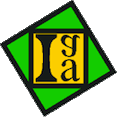

IGA Mini-Workshop |
Organisers
| David Baraglia School of Mathematical Sciences University of Adelaide North Terrace, Adelaide, SA 5005 Phone: (08) 8303 1604 Fax: (08) 8303 3696 E-mail: david.baraglia@adelaide.edu.au |
Pedram Hekmati School of Mathematical Sciences University of Adelaide North Terrace, Adelaide, SA 5005 Phone: (08) 8303 5261 Fax: (08) 8303 3696 E-mail: pedram.hekmati@adelaide.edu.au |
Thomas Leistner School of Mathematical Sciences University of Adelaide North Terrace, Adelaide, SA 5005 Phone: (08) 8303 6401 Fax: (08) 8303 3696 E-mail: thomas.leistner@adelaide.edu.au |
 |
 |